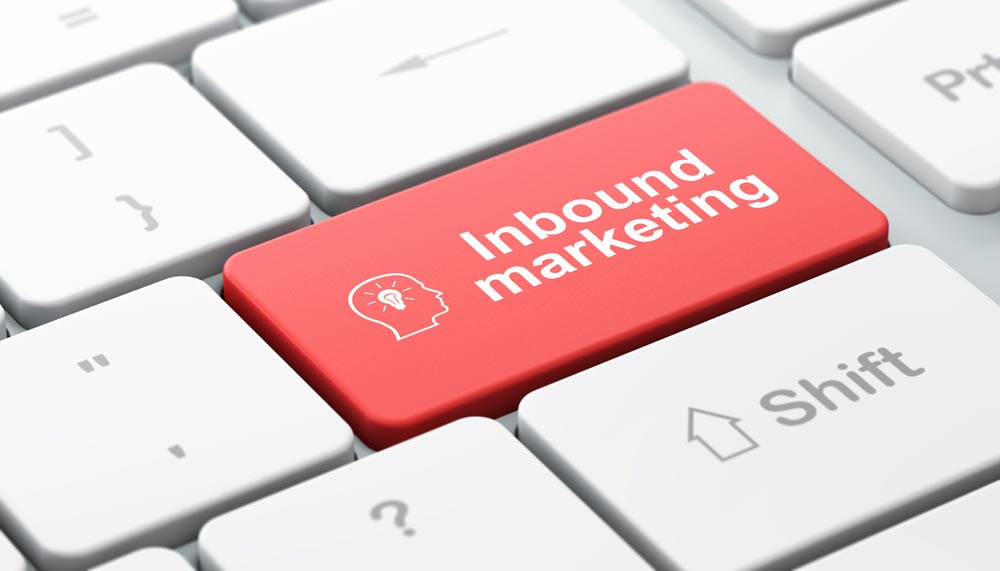
Should Agencies Provide – Agency Sales Enablement Services?
As more agencies learn about and implement sales enablement processes, it’s important for those agencies to realize that success with this strategy is contingent on several important factors. Most notably, you must have streamlined and well-thought-out strategies and processes in place to implement your sales enablement plans; otherwise, all the time, effort, and money you spend can result in little to no positive results.
Why You Agency Should Be Providing – Agency Sales Enablement Services
What Is Sales Enablement?
Sales Enablement is a systematic approach and process to increase sales organizations productivity through content, training, tools and analytics. This is achieved by marketing providing sales reps the resources and structure they need to effectively engage the buyer throughout the buyers journey. Increasing sales conversion and revenue.
To do this, sales enablement uses
- content
- training
- tools
- analytics
When done correctly, the process helps nurture a lead through the buyer’s journey, ultimately creating a customer, increasing conversion, and maximizing revenue.
Why Should Agencies Care about Sales Enablement?
If an agency wants to retain and grow clients’ retainers, that agency must understand the importance of both sales enablement and the alignment of sales and marketing—and then have the know-how to implement these strategic plans for its client. For the agency, not doing so could mean lost clients, and that means lost revenue.
Few agencies today are providing these services to their clients, but when done correctly, it can have a huge impact on clients’ revenue growth. That directly correlates to you keeping or increasing your client base.
The budget assigned to sales enablement has drastically increased in recent years because agencies are starting to recognize the value of this process. But throwing money at the issue isn’t the answer; properly funding a thoroughly and strategically created sales enablement program is.
Benefits of Sales Enablement
Sales enablement:
- Increases effective communication between sales and marketing.
- Establishes and facilitates common goals between sales and marketing.
- Provides a framework for creating, mapping, and using strategic content in the sales cycle.
- Increases productivity and efficacy of sales, thereby increasing the team’s ability to close deals and increase revenue.
Where many agencies fall down is thinking their jobs are done after they generate and nurture leads through marketing, but leads alone don’t prove the return on investment (ROI). Agencies can only truly showcase their worth (in dollars and cents) with sales enablement. When this important lead handoff is handled well, more leads are taken through the pipeline to closed sales, which leads to more generated revenue.
Avoid Client Churn for Your Agency
“Churn” is a dreaded word in the marketing world, and if it’s not feared in your agency yet, it should be!
Churn is what happens when you’re generating leads, but those leads are then managed improperly and eventually fall by the wayside. It’s often the direct result of not having a proper system in place to hand off leads at the right time.
Some common causes include:
- Not having an effective lead-scoring system.
- Not implementing a lead-handoff process.
- Handing leads from marketing to sales when they’re not ready to have conversations with sales.
- Failing to hand leads from marketing to sales when they are ready to buy.
- Failing to interact (effectively or at all) with the lead after the initial contact.
- Not training sales how to provide value and education through content.
Your agency can help mitigate churn for your clients with a proper understanding of sales enablement and the importance of aligning marketing and sales in the process.
After all, your goal is not to generate more leads for your clients; it’s to help them drive revenue by converting those leads into customers. Sales enablement can stem the damage of churn by facilitating that conversion.
Why Sales Enablement Is Important in an Evolving Buyer’s Landscape
More than ever, the buyer is in control of the buyer’s journey. Studies show a buyer is nearly 70 percent through the initial phase of the purchasing-decision process before even contacting or opening a dialogue with a business. This is drastically different than even five years ago, and the shift has changed the way sales needs to interact with and think about leads.
For one, it’s increasingly important for sales representatives to maximize every customer interaction. However, because the buyer’s journey is relatively new and different, salespeople can feel as if this strategy of communication through content is confusing or too time-consuming.
For example, salespeople might assume it will not be intuitive to know which piece of content to use when interacting with a lead, or they might fear it will simply take too long to sort through and find that relevant blog, testimonial, or case study.
That’s where sales enablement comes in. Proper enablement between marketing and sales can take the guesswork out of any lead communication. After the initial training and onboarding process, sales will find it actually saves time and produces results.
Increase Effective Communication between Sales and Marketing
All your sales enablement efforts will be ineffective if you don’t have proper communication between sales and marketing, and you can’t have communication without proper alignment.
This alignment is becoming more common, but a divide still exists. Only when true alignment is achieved can online leads be seamlessly transitioned through the buyer’s journey to paying customers.
How can you help you clients establish this all-important alignment?
-
Recommend a sales-level agreement (SLA)
An SLA is essentially a contract between sales and marketing. It establishes and puts into writing the shared goals and objectives of both parties. Sales enablement can only be effectively implemented after this agreement has been reached and agreed upon.
Goals should be specific, measurable, attainable, relevant, and time-sensitive (SMART), they should promote regular communication between the groups, and they should utilize performance metrics to assess how the teams (individually and together) are doing.
-
Advise sales and marketing to collectively provide input when developing buyer personas
Sales and marketing should both be involved in this step because sales is the front-facing side of the business. Salespeople are the ones talking to prospects and clients and getting valuable feedback about their challenges and problems. This information greatly enhances the creation of detailed, accurate, and effective buyer personas—without which you cannot create targeted, effective content.
Develop personas for: primary people (decision-makers), secondary people (decision influencers), and people you wouldn’t reach out to.
The insight of the sales team into how to identify these personas and solve their stated problems is invaluable, so sales should never be excluded from this step.
Map Content through the Buyer’s Journey
More often than not, the buyer’s journey is more problem-specific than product-specific. It’s an active research process the buyers go through when they’re looking for potential solutions to solve their problems or challenges, and it might lead to purchase decisions.
The buyer’s journey takes a lead through three stages: awareness, consideration, and decision. You should advise your clients to create content for every buyer persona at every one of these stages. That content should always address the specific persona’s needs or challenges.
If you don’t have the structure or system in place to determine where a lead is in the buyer’s journey or to have that specific, targeted content created and organized, you simply won’t be able to achieve conversion as effectively and efficiently.
Mapping your content involves several important factors:
- The content must be properly cataloged so everyone (sales and marketing) can find it easily and intuitively.
- The sales funnel must be tracked and analyzed, and everyone must know how to identify a sales-qualified lead versus a marketing-qualified lead.
- The mapping strategy should identify key characteristics of that content: Is the content for the top, middle, or bottom of the sales funnel? What persona is it targeting? What’s the content title, description, etc.?
Create a Content Library to Enhance Sales Enablement
There are two important things to remember when it comes to a content library. One, it must be created and organized strategically, and two, everybody in the company must know about it and how to use it.
After all, you can have the most effective, time-saving e-mail templates imaginable, but if your sales team doesn’t realize those are available in a database, those templates aren’t contributing to anything.
A content library should:
- Be easily accessible by all employees within the context of the buyer’s journey.
- Be filled with content that’s relevant to the created buyer personas.
- Include a variety of content types (sales presentations, competitor comparisons, product update e-mails, testimonials, case studies, blogs, video-based content, etc.).
A 2015 Sirius Decisions study found a staggering 65 percent of content is wasted. Not being relevant for sales accounted for 37 percent, and not being found accounted for 28 percent. That’s a huge investment of time and manpower your clients are putting into content creation that’s not doing anything for them. Strategic content creation and organized content libraries for sales reps can help knock that percentage down.
When it comes to content libraries, the most common barriers for sales include:
- They aren’t aware a library even exists.
- There’s too much disorganized content to sift through.
- They don’t have the time to look for relevant content in the library.
What’s the solution? Be organized and consistent!
Whatever content management system you’re using (whether it’s HubSpot, another CRM, a sales enablement tool, or an Excel spreadsheet), just make sure it’s accessible, easy to use, accurate, and sufficiently detailed. Then provide training to ensure everyone can navigate the system.
The effectiveness of the database should also be tracked. Are marketing and sales both using the database? Are they using it effectively? Do sales or marketing have any suggestions for how to improve the database?
Provide Sales Enablement Coaching and Training
This approach to lead management can generate pushback from sales teams. However, it’s important to emphasize to your clients that sales teams don’t need to change their actual approach to selling. They just need to apply their expertise and tactics to an altered system, which will actually provide strong value in the sales process.
That’s why effective onboarding of sales and getting their total buy-in to the system is so important. A company must demonstrate through this training that the system can provide real value to the sales teams with time-saving elements, such as e-mail templates.
Because salespeople are always so busy, and time is their number one commodity, you must prove the system is simplistic, easy to use, and efficient.
Training should:
- Demonstrate how to use content in the sales cycle, how to identify where a lead is in the buyer’s journey, and what kinds of content to provide and questions to ask at that stage.
- Teach them how to effectively use analytics in the sales process.
- Establish where content is in the database, how to access it, and how to navigate the system.
- Underscore that this process ultimately leads to increased revenue for the company.
Align Marketing and Sales from a Technology Standpoint
Philosophical alignment between sales and marketing is important, but just as important is technological and logistical alignment.
The company’s marketing automation tool, CRM, and any sales enablement tools (such as HubSpot’s Sidekick) must integrate. It’s also easiest to have shared databases. That way, everybody knows where to find content or can track a particular client’s progress through the buyer’s journey, and nobody is working from competing or conflicting information.
Sales enablement is incredibly powerful, but it’s not something to jump into and throw money at until you’ve done your strategic planning and research. Helping your clients achieve successful sales enablement means helping them understand it’s a process that involves buy-in from the entire company. It means aligning marketing and sales, and it means executing the right steps by the right people in the right order.








Recent Comments